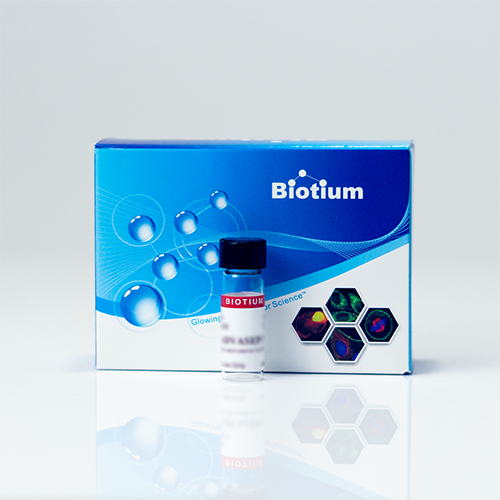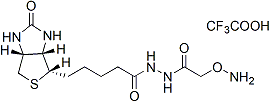ARP
ARP (N-(Aminooxyacetyl)-N’-(D-biotinoyl)hydrazine, trifluoroacetic acid salt) reacts with the exposed aldehyde group formed at abasic sites in damaged DNA, allowing the DNA to be labeled with biotin groups (1,2). The labeled DNA can then be quantitated with fluorescent or enzyme-conjugated streptavidin complexes.
Please fill in the inquiry form and we will contact you shortly.
Wishlist updated! View wishlist
Product Description
ARP (N-(Aminooxyacetyl)-N’-(D-biotinoyl)hydrazine, trifluoroacetic acid salt) reacts with the exposed aldehyde group formed at abasic sites in damaged DNA, allowing the DNA to be labeled with biotin groups (1,2). The labeled DNA can then be quantitated with fluorescent or enzyme-conjugated streptavidin complexes. ARP can freely cross the cell membranes, thus allowing detection of abasic sites in living cells. ARP is suitable for use in microplate assays.
- White solid soluble in DMSO
- Store at 4°C
- C14H22F3N5O6S
- MW: 445.41
References
1. Biochemistry 32, 8276-8283 (1993).
2. Biochemistry 31, 3703-3708 (1992).
3. PNAS 97, 686-691 (2000).


